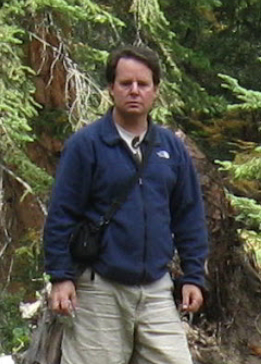Share
Update: U.S. District Court Judge Dale A. Drozd ruled on Friday, May 28, against three environmental groups trying to block planned fire protection projects in the Sierra and Sequoia National Forests.
Drozd denied a preliminary injunction sought by the environmentalists seeking to stop the U.S. Forest Service from activating 31 different projects.
The groups, led by Unite the Parks, are seeking to shut down logging, chipping, burning, and hazard tree felling, saying the projects violate the Endangered Species Act.
Original Story Published April 23, 2021:
A relative of minks and otters, the Pacific fisher is a medium-size carnivorous mammal – about the size of a house cat – that once roamed the West Coast from British Columbia to Southern California.
The Trump administration in May of 2020 denied Endangered Species Act protection to the Pacific fisher across most of its West Coast range, except for a dwindling population in California’s southern Sierra.
Three environmental groups say plans by the U.S. Forest Service and U.S. Fish and Wildlife Service for logging and vegetation management won’t provide proper protection of Pacific fisher habitat.
The lawsuit targets the Sierra, Sequoia, and Stanislaus National Forests.
Lawsuit Targets 45 Projects
Unite the Parks, Sequoia Forestkeeper, and Earth Island have sued in the Eastern District Court of California in Fresno to stop 45 planned projects ranging from logging, chipping, burning, and hazard tree felling.
Many of the planned projects are in the Sierra National Forest, which was the site of the Creek Fire — the single largest wildfire in California history at 379,895 acres before being contained on Dec. 24, 2020.
“The purpose is to protect the Pacific fisher,” says René Voss, attorney for Sequoia ForestKeeper. Voss says the forest service is seeking to take out trees larger than 10 inches in diameter starting as early as June of this year. Voss points to science he says shows that thinning and logging aren’t the answer to preventing large fires.

“The purpose is to protect the Pacific fisher.” – René Voss, attorney for Sequoia ForestKeeper
Fresno County Supervisor Nathan Magsig, whose district encompasses a large part of the Creek Fire burn area, says seeing the devastation firsthand gives him a different perspective.
“All you have to do is look at the devastation and damage that the Creek fire caused in areas that were un-managed and look at those areas that were managed,” said Magsig.
The supervisor said that the managed areas suffered much less damage: “That is your evidence.”
Debating Best Methods to Prevent Large Wildfires

“Any studies that rely on theory, I don’t have much time for those in practice.” – Fresno County Supervisor Nathan Magsig
Voss says current wildland fire models are flawed because they don’t account for atmospheric effects that result from the removal of ladder fuels and fuel reduction thinning. Those practices lead to increased windspeeds, fire spread, and fire intensity, he said.
“The thinning and the fuel reduction work that they’re doing out there, supposedly to reduce fire risks, actually make things worse,” says Voss.
For example, Voss said, when the forest service thins out areas underneath old-growth trees, it’s easier for wind to flow through the forest’s under-canopy and amplify the flames.
“The three main ingredients of a fire are ignition, fuel, and oxygen,” Voss said. Forest management and thinning don’t account for the oxygen component, he said.
Voss says when ladder fuels are removed, ground-level wind speed and turbulent mixing increase, leading to faster fire spread and greater oxygen-transport efficiency; this, in turn, results in increased fire intensity. He points to a study by atmospheric physicist Dr. Joseph Warne (Unite the Parks v. U.S. Forest Service) that he says proves this out.
Magsig says anyone citing these types of studies to negate the positive impact of forest management needs to go to the Shaver Lake area and explain that to people that lost everything in the Creek Fire.
“Any studies that rely on theory, I don’t have much time for those in practice,” says Magsig. “You will see that those areas where there was appropriate thinning, and ladder fuels were taken out, the fires were not as devastating.”
But Voss points to a study done by Dr. Chad Hanson that shows that the most heavily-managed areas in the Creek Fire burned with the greatest amounts of high severity, and the most protected or least managed areas burned with the least amount of high severity.
“The Hanson study simply reports the data; this isn’t theoretical,” says Voss.

Environmental Groups’ Stance on Forest Management
Voss says the interests he represents aren’t totally opposed to forest management.
“What we’re saying is they shouldn’t they shouldn’t be logging in anything larger than say what they need to be able to reintroduce fire,” said Voss, adding that nothing larger than 10 inches in diameter should be taken out of the forest. “So the management proposal that we do support is prescribed burning in the appropriate time of the year and a much larger scale.”
Voss says the Sequoia, Kings Canyon, and Yosemite National Parks have been doing widespread prescribed burning for decades. He says his research shows that fires in the parks don’t burn as intensely as opposed to the National Forests, where widespread prescribed burning hasn’t been done.
Projects That Could Be Impacted by Lawsuit
Sequoia National Forest
1. Eshom Ecological Restoration Project
2. Hazard Tree Slash Cleanup Project
3. Road 25S15 Hazard Tree Project
4. Summit Healthy Forest
5. Big Stump/Redwood Mountain Fuels Restoration Project
6. Long Meadow Restoration Project
7. Trail of 100 Giants Hazard Tree Mitigation Project
8. Plateau Roads Hazard Tree
9. Rough Plantation Maintenance and Restoration
Sierra National Forest
1. Musick Vegetation Project
2. Whisky Ridge Ecological Restoration Project
3. French Fire Recovery and Reforestation Project
4. Blue Rush Restoration Project
5. Aspen Restoration Project
6. Ferguson Fire Roadside Hazard Project
7. Cedar Valley Fuels Reduction Project
8. Greys Mountain Ecological Restoration
9. Sonny Meadows Pinegrove Restoration Project10. Sky Ranch Road System Hazard Tree Abatement Project
11. Madera and Mariposa County Road Hazard Abatement Project
12. Upper Chiquito Creek Bridge Replacement
13. FY19 Joint Chiefs Fuelbreak Project
Stanislaus National Forest
1. Rim Fire Recovery and Reforestation
Copy of Court Filing
Click here to view the entire court filing.
[activecampaign form=25]RELATED TOPICS:
Categories

Fresno County Firefighters Contain Reedley House Fire


















